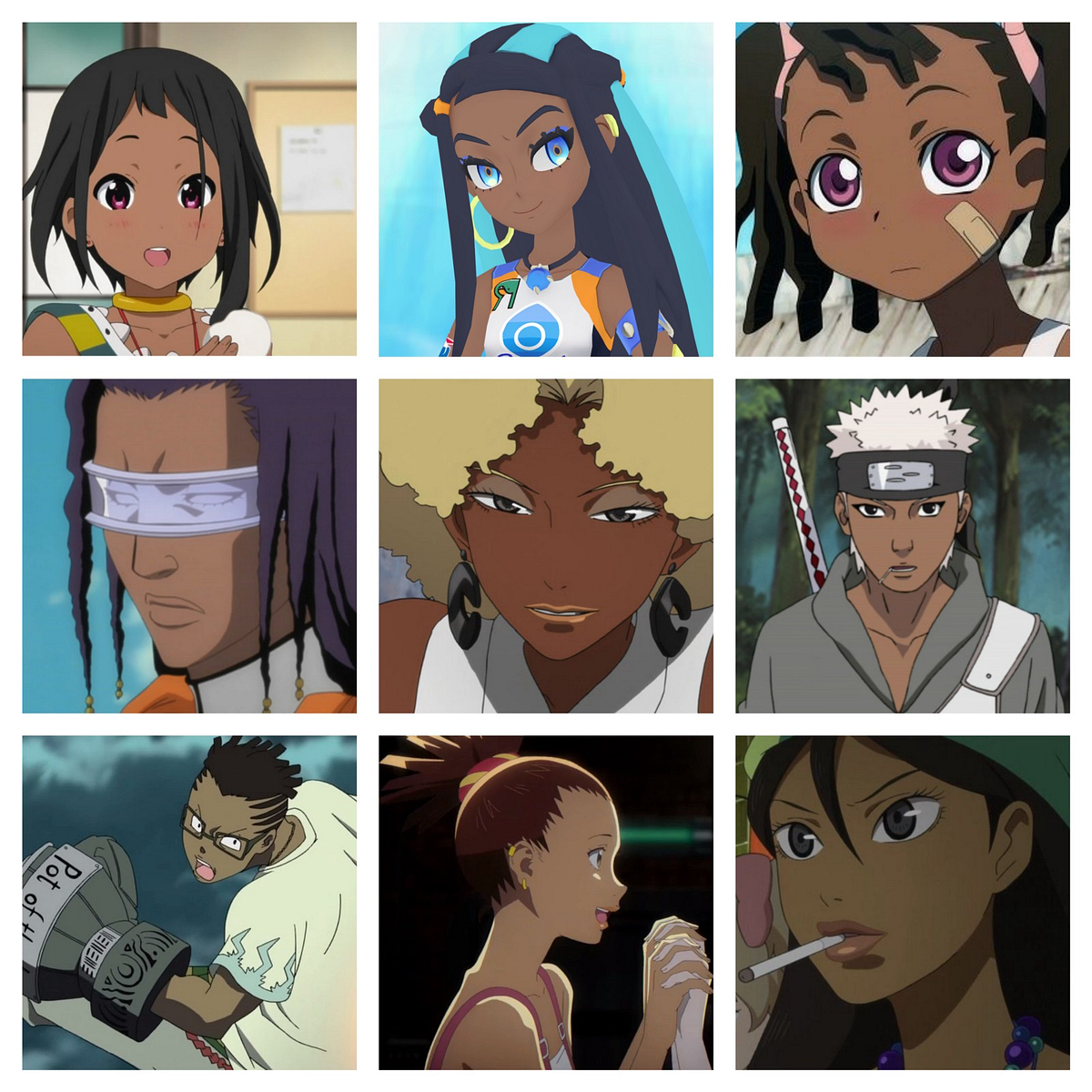Despite the fantastical nature of anime, there’s a noticeable lack of both POC (people of color), and/or people who belong to the LGBTQ+ community. Even with its popularity overseas, anime largely remains exclusive to anyone who doesn’t fit a certain mold.
While anime has instances of darker-skinned characters, they’re fewer in number compared to their lighter counterparts and are almost always Japanese. While dark-skinned Japanese representation is great, it’s only one type of representation.
An integral point going forward, is that dark skin doesn’t equate to a black character. There are dark-skinned Asian people as well, and it’s important that the difference is known as proper representation means not stopping on the toes of others.

Kotaku
“Witch From Mercury Gundam” protagonists Suletta and Miorine.
Besides, even though most anime take place in Japan, even more are in medieval and/or fantasy worlds. Some argue that people of color wouldn’t appear because of historical realism, but as these are works of fiction, the argument falls flat.
Aside from the more medieval animes, there are people of different ethnicities in modern Japan, so there’s no reasonable explanation for why there shouldn’t be POC in the more “realistic” anime. Even if there’s someone of color in an anime, on some occasions they look exactly like their white counterparts but with darker skin.
In the last decade, the anime industry has put a bigger focus on its Western audience, yet it continues to act as only Japanese people watch it. This may be due to Japan’s supposed distrust towards foreigners, and its inclination toward being a homogenous and nationalist culture.
There’s no excuse for a lack of representation especially when there are series that easily bring in people of color and don’t make them stereotypical. Even if we were to brush aside the argument about people of color, that doesn’t get rid of the issue surrounding people with different sexualities, disabilities, and even mental illnesses.
This issue has taken root in Japan’s entertainment industry and although decades have passed since anime’s creation, it maintains a tight grip on almost every facet of Japanese media. Fortunately, there’s been a variety of anime that have gone against the grain, like Golden Kamuy, Naruto, Gundam, Hunter X Hunter, Fire Force, Soul Eater, and Skip and Loafer.
Excluding Golden Kamuy and Skip and Loafer, the anime listed above all have black characters throughout their stories, and most importantly, they’re not racist caricatures. It’s one thing to represent POC, it’s another thing to do so using copied and pasted stereotypes, (just look at Shaman King).
For example, in Gundam, (specifically the series known as Gundam 00), the occupation of Middle Eastern nations by foreign powers is a core story arc in the show. While it’s not perfect, people of color are not only prevalent, but one serves as the main character of the series.
Unfortunately, racism and homophobia remain major issues in the industry, and in the fan community. Oftentimes when a homosexual, trans, and/or non-binary character is represented in an anime, they’re portrayed as weird, sexually deviant, ugly, and sometimes even pedophilic.

“Mob Psycho” Promo Art
“Mob Psycho” characters Reigen and Mob.
LGBTQ+ characters have had a difficult time being represented, as many characters are incredibly problematic or have themes that can be interpreted as being related to the struggle but are never outright said to be.
More recently, however, there’s been a change in how the LGBTQ+ community is represented, and it’s a much-needed improvement. For example, in Skip and Loafer, one of the core characters is a young trans woman, who is treated simply, as a woman instead of putting her identity front and center.
None of the stereotypical features or mannerisms rear their ugly heads, which is a welcome change, and even the show doesn’t outright tell you and only gives subtle hints.
Not only is this rarely done for LGBTQ+ characters, but it’s an uncommon writing concept in general as show don’t tell is something many writers struggle with. To see it not just done well, but on a character that could’ve so easily been but another addition to the collection of stereotypical LGBTQ+ characters, is something worth commending.
However, while POCs and LGBTQ+ folks have started to see better representation, people with disabilities are still a writing weakness for many mangakas. People with disabilities rarely appear and often their struggles are outright ignored, both in manga and anime, and in real life.
Never mind the fact that mental illness is typically represented as watered-down PTSD that serves as an excuse for a character to go into a psychotic rage when the plot demands it. Even more insulting is when said PTSD is completely resolved in the same episode it was introduced or a few episodes later (despite it not working that way).

CBR
“March Comes In Like A Lion” protagonist.
Far too often anime and manga act like mental illnesses are something that can just be written off eventually or as convenient plot devices. Do you need your main character to go psycho while fighting antagonists? Give them PTSD and pretend that anger and visions are the only symptoms.
If it were possible to bring up any other examples, it would be done, but other mental illnesses aren’t represented very well if at all, so it’s difficult to focus on them. There are good examples of representation like “March Comes In Like A Lion” and “Mob Psycho”, but they are few and far between.
If nothing changes, anime, manga, and media in all forms will continue to retread the same story beats with the same issues until the stagnation nearly destroys the industry. Despite this, people of varying backgrounds and cultures are finding better representation than ever before. Although it’s not perfect, there is a sign of change.

